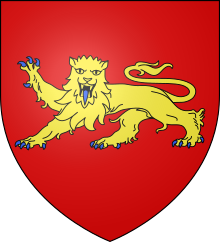Guyenne

The Guyenne (formerly also Guienne , Occitan Guiana ) was a duchy and part of modern Aquitaine in the Middle Ages . "Guyenne" is a linguistic modification of the Roman Aquitania . It made up the core area of English possession in France, so its scope and extent changed more often in the Middle Ages.
The early modern French province is not with the modern Aquitaine and the region Nouvelle-Aquitaine congruent, but also included today to Okzitanien counted areas east of it. According to today's terms, these included the departments Gironde (mostly), Dordogne , Lot , Lot-et-Garonne (mostly), Aveyron and Tarn-et-Garonne (partially).
history
With the marriage of Eleanor of Aquitaine to Heinrich Plantagenet (May 18, 1152), the Guyenne and neighboring areas became part of the Angevin Empire , which also designates the later possessions of the English crown in France. After the great loss of territory by the English in northern France towards the end of the Hundred Years War (1337-1453), only the Bordelais and the Agenais remained as their property shortly before its end .
With the end of the Hundred Years War (1453), the Guyenne area was incorporated as a province into the Kingdom of France .
In the 18th century, the Guyenne formed a government together with Gascony , but this was divided into counties and vice-counties, some of which had their own assemblies of estates.
During the French Revolution , the province was finally dissolved through the creation of the departments .
See also
literature
- Benoît Cursente: Guyenne . In: Lexicon of the Middle Ages (LexMA). Volume 4, Artemis & Winkler, Munich / Zurich 1989, ISBN 3-7608-8904-2 , Sp. 1807-1809.
Web links
- Guyenne, history etc. - information (French)
